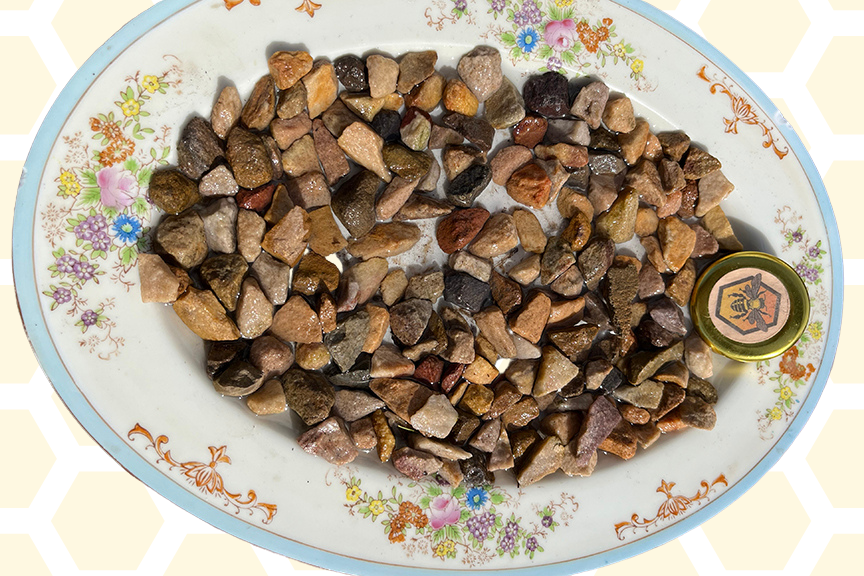May 2025

Story and artwork by Anne M. Dellinger, Contributing Columnist
The next time you enjoy an apple snack or a chocolate candy bar, you might want to take a moment to thank a pollinator. Afterall, some form of wildlife was helpful in producing that tasty treat you are chewing on.
It is very easy to take for granted the service these special agents provide because most pollinators are small, quiet and simply overlooked. Unless you have done some gardening, you probably have never noticed a pollinator going about the business of pollination.
As it pops in and out of flowering plants looking for food, its wiggles and jiggles cause bits of pollen to stick to its body. This hungry, pollen-coated critter will continue visiting many flowers and, unknowingly, transfer the special pollen grains needed for plant reproduction all along the way.
The flower visitor is totally unaware that by moving sticky pollen around, it is playing a vital part in food production. Scientists estimate that one out of every three bites of food a person eats is made possible by these unwitting pollinators. In other words, pollinators help ensure the world eats! And that makes them some of nature’s best heroes, even though they are clueless about their celebrity status.

POLLINATOR SUPERSTARS
Bees usually come to mind first when thinking about pollinators. With approximately 20,000 species in the world, bees are the most abundant and most recognizable pollinators. The U.S. has the greatest number of native bees with over 4,000 species. However, there are also other members of this diverse group of superstar pollinators that keep food products and crops growing.
Unscramble their names on the illustration above and be on the lookout for these celebs as they stop by the flowering plants in your neighborhood this spring. (Answers appear at the end of this article.)
These food production heroes help keep everything from avocados to zucchini available in the grocery store. However, the modern world has created some serious challenges for this vital, elite group.


POLLINATORS ARE IN TROUBLE
There are several threats endangering pollinators.
HABITAT LOSS — housing development, new roadways and intensive agriculture are destroying the pollinators’ homes.
PESTICIDES — the improper use of chemicals is deadly to pollinators.
CLIMATE CHANGE — rising temperatures, along with the mismatched timing of blooming plants and the arrival of pollinators looking for food, can lead to death. Survival is not easy for pollinators. Faced with the danger of fewer places to feed/breed, hazardous substances and fickle weather patterns, they could use some help. And while this is a challenging problem to tackle, there are some easy things you and your family can do to support these hardworking heroes.
MAKE A BEE BATH — Bees need a place to drink water and cool off. Put small stones in a shallow container, add water and place in an area where bee activity has been observed. Change water every few days to deter mosquitoes.
MAKE A BUTTERFLY MUD PUDDLE — Butterflies require water, minerals and salts. Fill a shallow container with a mix of sand and soil. Add some flat rocks for perching. Pour enough water to moisten the soil and add a pinch of table salt on the surface. Place overripe fruit along the edge. Keep moist but no standing water … remember, mosquitoes are not welcome!
SWITCH TO ORGANIC PESTICIDES — There are a variety of recipes online for homemade pesticides using household items such as vegetable oil, liquid soap, garlic and chili pepper.
PLANT A POLLINATOR GARDEN — Choose a variety of flowers in different shapes, sizes and colors that will bloom at different times throughout the season.
CREATE A MEADOW-LIKE LAWN — Dandelions are the first food for the bees emerging in the spring. Create a temporary no-mow zone in a portion of your yard that will allow dandelions, as well as clover, to grow. It may have a wild, messy look but the bees will love it!
After carrying out some of these suggestions, you will never take a pollinator for granted again. In fact, you may feel like a certified “pollinator protector!”
By taking an active role, you are helping keep a process in motion that is essential to human survival. Guess that makes you one of nature’s heroes, too!

Answers to scrambled pollinators: butterflies, moths, beetles, flies, wasps, hummingbirds

